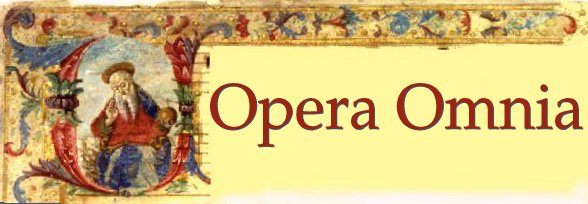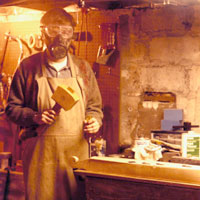

 Following is a more or less complete list of musical instruments I've built. Return to Oriscus.com |
 |
![]()
|
|
1968 Appalachian dulcimer (Click for details on the dulcimers) -- 4 strings, plywood/pine, modified tail cutaways. I learned how to make dulcimers from Howard Mitchell's seminal Mountain Dulcimer : How to Make It and Play It After a Fashion. I've never looked at a hollow core door the same way since. My first instrument (which I still have and still play) was made of plywood, 2x4's and spar varnish. It would make a good boat or maybe a car jack. Really big sound. 1969 Appalachian dulcimer -- 3 strings, mahogany/ebony, traditional hourglass shape with Stradivari-inspired decorations in ink. My first attempt at making a "real" instrument. I built heavy plywood molds for the sides and steam bent the mahogany. Broke several pieces learning how to do this. 1969 Appalachian dulcimer -- 3 strings, poplar/maple/ebony, traditional hourglass shape with Stradivari-inspired decorations in ink. 1969 Appalachian dulcimer -- 3 strings, poplar/maple/spruce/purpleheart, traditional hourglass shape with Stradivari-inspired decorations in ink. 1970 Walkingstick dulcimer -- mahogany/butternut, original abstract design.
1976 Bowed psalteries (Click fo details on my bowed psalteries) (4) various materials, original bow design. I got the specs for building psalteries from a monk who was taking classes at New College in Florida. I had heard one some years before and wanted one for some time. My first psalteries were not great - I had to learn about the effects of torque on the pinblock.
ca 1985 Thickness Sander - As I began to make instruments I realized I needed a way to make pieces of wood that were too thin to slice on a table saw or bandsaw. The solution was to copy a thickness sanding machine made by my friend Tom Creech. Mine is very similar in most respects to Tom's, but I used a piece of heavy angle iron to reinforce the hinged table. Height adjustments were made by means of a large screw repurposed from an old piano stool. The electric motor was salvaged from an old cement mixer that was left in my storage shed (along with tons of other less useful junk) by the former owners of my house. The large cylinder is made of solid discs of white oak glued up in alternating grain directions onto a steel shaft. It was all made level by simply running sheets of coarse sandpaper between the table and the cylinder. For thickness sanding, I bought spools of one-inch aluminum oxide automotive sanding tape from a body shop supplier and glued it in a spiral around the cylinder. There is no auto-feed mechanism on this. Pieces were fed by hand in one side and pulled out the other.
1982 Bowed psalteries (10) -- various materials. I decided to try making psalteries for sale. For several years I sold them at local arts fairs in the Lexington, KY area. I used every kind of wood I could find, though usually opting for Alaskan spruce for the soundboards. All in all I sold nearly 100 of them. 1983 Bowed psalteries (18) -- various materials. 1983-1985 Chime trees (several) -- hardwoods, aluminum. I made several sets of chime trees to sell at art fairs along with my psalteries. I purchased 20 foot lengths of aluminum rod which I cut, finished and hung from wooden hangers. 1984 Door harps (6) -- various materials. 1984 Bowed psalteries (10) -- various materials. 1985 Bowed psalteries (7) -- various materials. 1985 Door harps (8) -- various materials. 1986 Norwegian langeleik (Click for details on the langeleik) -- 7 strings, dual scroll heads, maple frets, maple/spruce/rosewood, modified from drawings of instruments in Trondheim. The only instrument I ever made as a commissioned work. My sister in law, Andrea Een, is a highly respected hardanger fiddle scholar who teaches at St. Olaf College in Minnesota. The langeleik is similar in concept to the Appalachian dulcimer, so she thought I might be able to build her one. She provided a number of drawings with specification taken by someone she knew from instruments in a museum collection and I chose a design that is sort of a combination of several instruments. 1987 Bowed psaltery -- maple/cocobolo/spruce. 1988 Plucked psaltery -- 26 strings, spruce/maple. Original design modeled after 15th century strumento di porco. This was an interesting engineering problem to make the "pig's head" shape. It looked really nice, but the geometry was flawed so it didn't play well. 1988 Nail violin -- I have no pictures of my nail violin. I made it in the traditional German style out of a solid block of maple with the inside cut out and thin cherry boards covering it. It had a thumb hole in the back. It was a half-moon shape about 7 inches in diameter with the nails set around the curved edge so they could be bowed. I tried using heavy drawn wire, thinking it might be more musical (springier) than regular nails, but I found that normal finish nails actually worked better. Simply tuned by hammering the nail in until it gave the right pitch. It didn't have much volume, so I think I just discarded it at some point. I should have made it lighter, larger and more resonant. See this site for info/examples of nail violins. 1989 Plucked psaltery -- 24 strings, walnut/spruce/maple. See separate page for details. 1989 Folk harps (2) -- 22 strings, lap-size neo-Celtic, walnut, cherry. I built these with my friend Tom Creech, who did most of the hard work of designing it, cutting the angles on the end blocks and constructing the sound box. I did much of the work on shaping the heads (AKA "necks") and pillars; I cut and lined the quatrefoil soundholes in the back, and I created the brass plates over the bolt hole in the foot of the pillars and the circular plates nailed across the head joint opposite the string torque. I also did the initial stringing and tuning. We used a stringband (i.e., determination of string diameters and lengths) published by Mark Bolles in the Folk Harp Journal. The body is cherry veneer plywood and has a remarkably big sound. Much easier to build with than spruce. The forepillar and headstock are joined with biscuits, which turned out to be a phenomenally good idea. 25+ years later the joints are still tight.
1990 Folk harps (4) -- 22 strings, lap-size neo-Celtic, cherry. Original design. Same as above. 1991 Korean-style cheng (Click for details) -- 16 strings, oak/maple/spruce, original design. This was a weekend project that came out much better than it should have. I happened to have all the materials at hand, including the 48" long spruce soundboard. I lightly reinforced the soundboard, but the arch is intrinsically very rigid. I used a black aniline stain on the soundboard before trimming the edges so there is a clean line. The end blocks and bridges are made of spalted maple. All the strings are the same diameter. Each string runs from the tuning pin, over the moveable bride, through a hole to the recessed end block, wraps around a brass hitch pin and returns as the next string. This instrument is now owned by the Mobile (Alabama) Symphony and is used in their educational outreach programs.
1992 Theremin -- Solid state digital electronic instrument. I found a schematic online. It made some kind of noise, but never really worked right. 1993 Electric cello (Click for details) -- maple/rosewood/ebony/steel. Original design based on modified Jensen 'cello. I'm a viola da gamba player so this cello has a relatively wide rosewood fingerboard. Gold plated Grover bass heads (left hand). Fishman cello pickup. I used an actual ebony cello tailpiece (cut to fit) and end button. Read more about the making of this instrument. 1993 Bowed psaltery -- maple/spruce. 1995 Aeolian Harps (5) -- redwood, maple.
I sold a few of these and gave away others. They're really easy to make
and work great if you have a good breeze and sash windows. 1982 - 1996 Various small whistles, wind chimes, experimental noisemakers. 2000 Cookie tin erhu (Click for details) - Cookie tin, sawed off broom handle, cello pegs, cane bow.
2006 Folk harp (1) -- 22 strings, lap-size neo-Celtic, cherry. Original design. Same as above. This was actually rebuilt from one of our first harps that had a head joint failure. This was before we switched to bisquit joints. The parts sat on a shelf (several, actually) for something like 17 years until we had an offer to buy one, thus providing the motivation to finish this off right. We fixed the head joint with biscuits and refinished it. Actually turned out rather nice, though I prefer the all-cherry models over this walnut/cherry combo. (click images for larger) 2008 Dulcimer hammers. I bought an old hammer dulcimer from a friend, but it had no hammers. I could have bought some, but I thought I'd try maknng my own. They look a bit gnarly, but they actually work quite well. The balance and weight is just fine, which I attribute to dumb luck. For wood I just used some old hardware store paint stirring sticks. They were straight and handy. You can still see paint on the shafts. The handles are triple layers of paint-stick. The heads are reversible, with some suede leather glued to one edge. Both sides work well, though a somewhat harder leather might be better.
IN PROGRESS: 2016 Arpanetta -- chromatic harp/zither hybrid (in design phase). The arpanetta is basically a vertical harp, which is to say a zither with strings on both sides and played vertically, harp-style. The model I'm using for my project is an instrument in the Boston MFA. There are numerous oddities about these arpanettas, especially the use of mulitple bridges (possibly to allow for sympathetic vibration) and inset chromatic strings. At this point I'm considering whether to make a more-or-less authentic replica of the Boston instrument, with historical brass and iron wire strings, or to approach it more as a modern instrument with fewer quirks. At this point, I'm leaning towards the latter in order to make something more useful and fun to play. My plan is to use a CNC router to cut the bridges and drill all the pin holes. May use it to create nice roses for the sound holes as well.
|
![]()
If you have comments or suggestions, please use my comments form. Revised 09/09/18 .